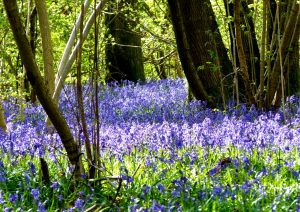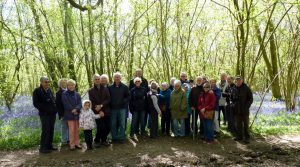At our April meeting we welcomed Tim McPherson, a Director of the Angling Trust, publisher, angler, naturalist, ornithologist and conservationist. Tim came to talk to us about the work of the Angling Trust, and explained that the biggest threat to sea-angling is the lack of fish brought about by decades of over-fishing and failed management by the UK government and the EU, through the Common Fisheries Policy. The Angling Trust’s ultimate goal is to allow recreational sea fishing to have a greater say in how fish stocks are managed through lobbying and campaigning, and to allow the promotion and development of this sport for future generations.
The Angling Trust members support the campaigns they carry out to protect fish stocks and together with Fish Legal, the legal arm of the Angling Trust, they use the law to fight pollution and other damage to the water environment – both freshwater and marine – and protect the rights of anglers and angling. The Angling Trust are continually campaigning against poaching, the quality of waters, inshore netting, reform of rod licences and other important issues.
Tim also told us about a popular recreational fishing area called the Kingmere Marine Conservation Zone, this lies between 5 to 10 km offshore of the West Sussex coast between Littlehampton and Worthing and has the ideal topography to attract marine life. This area is one of the largest breeding sites of black bream in the country and is popular with chartered fishing boats. These fish build their nests on hard bedrock overlain with thin sand and gravel. The male fish will make a nest in the substrate and when the female has laid her eggs he will guard the nest until the eggs hatch. Black bream are ‘protogynous’ which means the females turn into males when they reach about 35 cms. Further Marine Conservation Zones will be considered in future.
A short AGM followed a break for refreshments where Ed Miller was appointed as Secretary to replace Debbie Dilks, and Graham Tuppen voted onto the Committee. Other existing committee members were re-elected unopposed.
David Bettiss delivered April’s Nature Notes with news that many migrant birds had been seen around the area including wheatears, male redstart, black cap, chiff chaff, whitethroats, swallows, and great crested grebe. Butterflies seemed more plentiful than last year with peacock, small tortoiseshell, brimstone, speckle wood and an orange tip being spotted in gardens.
Ed Miller concluded the meeting and although there were no new planning applications, there is great concern that the proposed new housing estates in Angmering will cause an additional burden on the already congested local highways.


